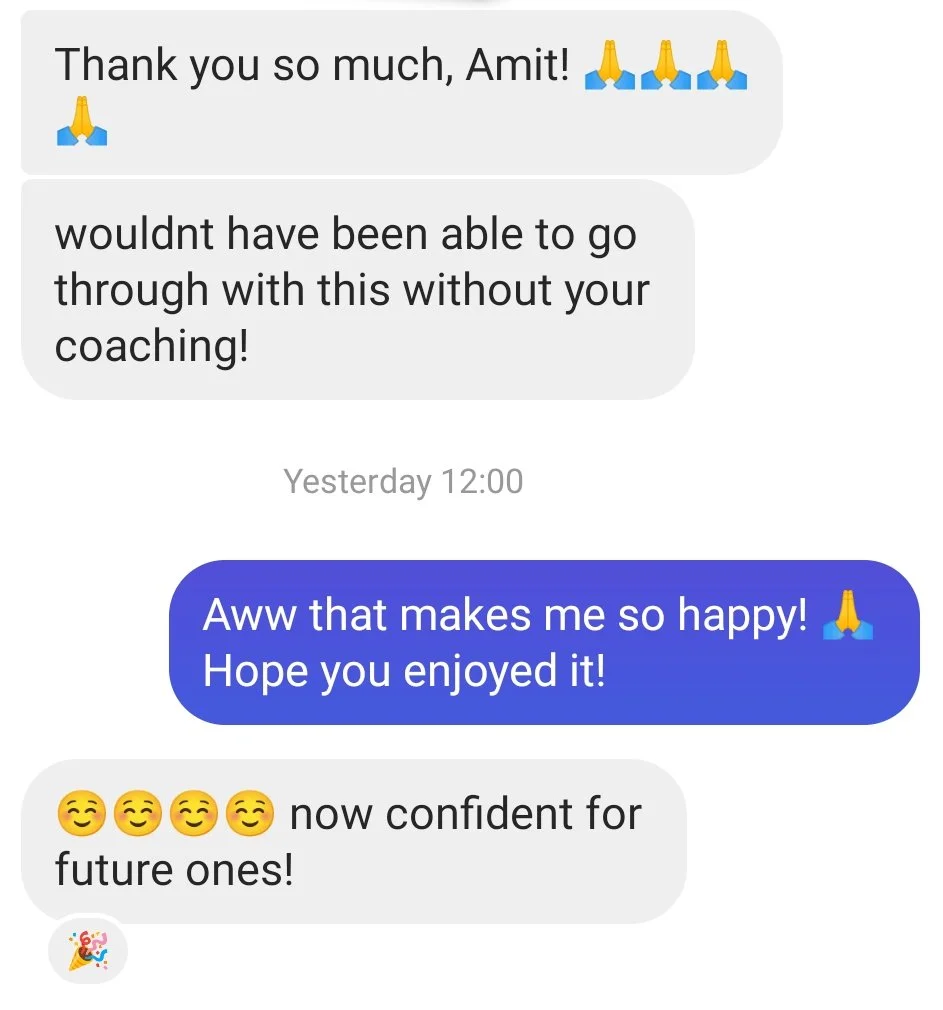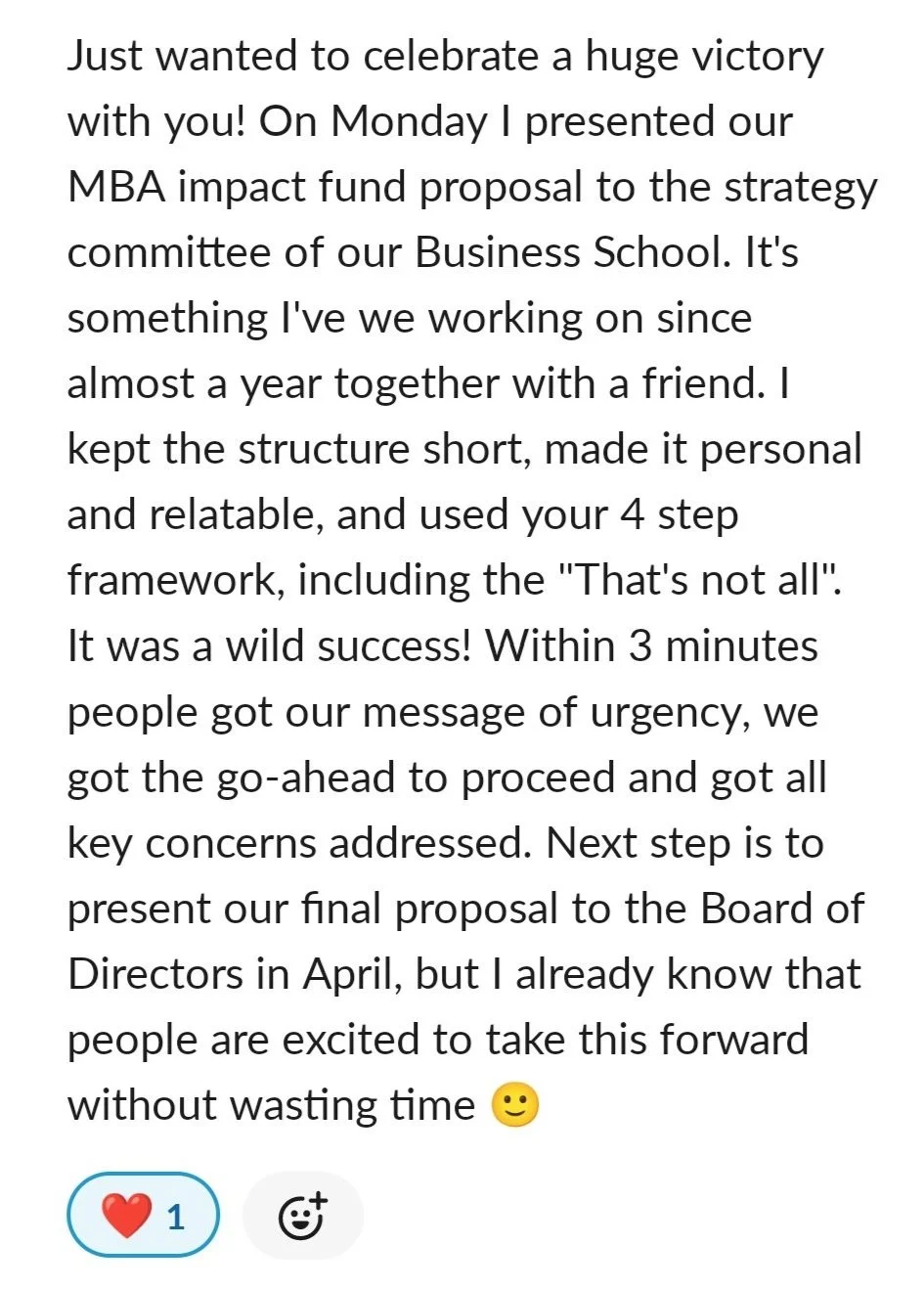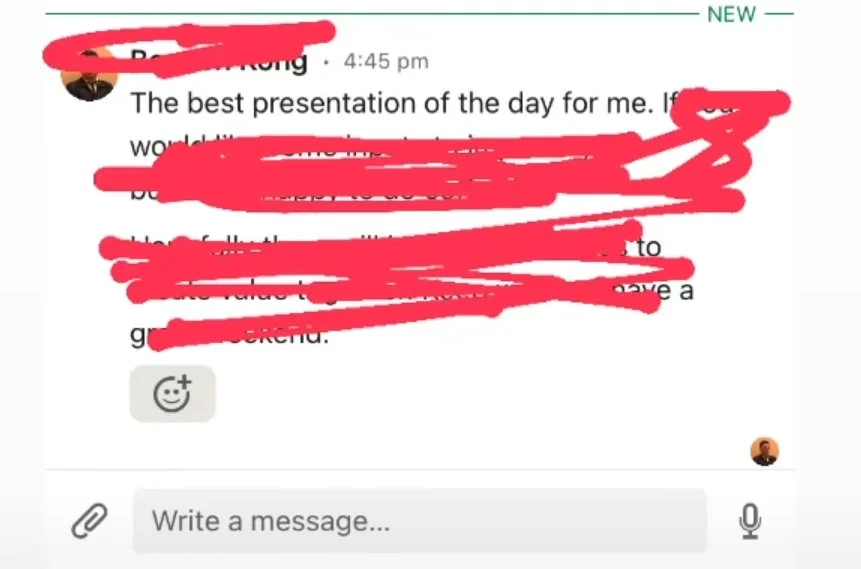
Add Humour to Your Talks (Without Telling Jokes)
Want to make your presentations more engaging, memorable, and human—without forcing jokes?
You're not alone.
As a public speaking coach, this is one of the most common things professionals ask me: “How can I be funnier?”
Good news: You don’t have to be a comedian.
Just a little more relatable, surprising, and intentional.
This guide walks you through five practical ways to add humour to your presentations in a way that feels natural, warm, and effective.
1. Tell a Real Story
The easiest way to make people smile? Share a personal moment or a relatable anecdote.
Humour doesn’t have to come from a joke. It often lives in the awkward, honest, and unexpected parts of our own lives.
Example:
Brené Brown opens her TED talk with a story about someone struggling to describe her as a speaker: “I'm going to call you a researcher... but I'm afraid people will think you're boring and irrelevant.”
That line gets a laugh because it’s vulnerable, self-aware, and perfectly sets up her talk on vulnerability.
Why it works:
It’s real and human
It invites connection
It creates an emotional hook
Identify a lighthearted moment that’s relevant to your message—and share it simply, without over-explaining or forcing a punchline.
2. Use Analogies or Metaphors
A well-placed comparison can make a dry or complex topic suddenly click. And if it’s a little exaggerated? Even better.
Example:
I helped an engineering leader describe their role like this:
“It’s like assembling IKEA furniture without the manual, while the parts are on fire, and someone keeps asking when it’ll be done.”
This made the audience of engineering leaders laugh because they’ve lived that chaos. It made them feel seen.
Other examples:
“It was like changing a car tire while it’s still moving.”
“Explaining this to management was like trying to teach a cat to swim.”
Why it works:
Surprises the brain
Makes abstract ideas concrete
Adds playfulness to serious topics
So think to yourself: what’s the situation really like? Then take the comparison just far enough to make it funny.
3. Borrow a Quote
You don’t have to be the one with the funny line. Let someone else deliver it for you.
Example:
I often use this quote from Mark Twain:
“It usually takes me more than three weeks to prepare a good impromptu speech.”
It gets a laugh, but also drives home the message that preparation matters for success, even in spontaneous communication.
Why it works:
Lightens the mood
Reinforces your point
Shows you've come prepared
Tip: Look for quotes that are short, clever, and relevant to your message. Bonus tip: ask ChatGPT for help finding them.
4. Share a Short Video
Want to break the rhythm and re-energise the room? Let a short video do the work.
Example:
One speaker I coached used a funny IKEA commercial in a talk on UX design (I swear not all my advice is IKEA-related). It was 30 seconds, totally on theme, and got a big laugh.
Why it works:
Adds energy
Gives the audience a mental breather
Lets someone else do the heavy lifting
Tip: Pick something brief, relevant, and easy to transition from. And always test the tech beforehand.
5. Show a Photo or Meme
Humour doesn’t have to be verbal. A visual moment can say it all.
People love visual surprise, especially when it reveals something personal or relatable.
You can use funny images, personal photos, or even memes.
Why it works:
Creates instant connection
Breaks up the visual monotony
Makes you more memorable
Formula: Choose a photo that’s funny or unexpected, and explain the story behind it. That’s where the humour really lives.
What Not to Do:
Don’t force it. If it doesn’t feel natural, skip it.
Don’t punch down. Stay respectful and self-aware.
Don’t overdo it. Let humour support your message, not drown it.
Humour doesn’t have to be big to be effective. Sometimes, one small moment of realness can change the whole tone of your talk.
Give one of these a try in your next presentation—and see how it changes the way people respond.
About Me
Strong communication doesn’t just inform. It helps people understand, decide, and act. That’s why clear, human, and confident communication matters
I’m Amit—international speaker coach, communication trainer, TEDx organiser, and your biggest fan when it comes to impactful public speaking.
Over the past decade, I’ve coached high-achievers from Fortune 500 execs to Olympic medalists, startup founders, and technical experts—helping them deliver talks that connect, stick, and move people.
Whether you’re preparing for a big pitch, keynote, or internal presentation, I’ll help you shape your message, tell the right stories, and feel ready when it matters most.
My clients have won international pitch competitions, delivered some of the most-watched TEDx talks of their year, and been featured on top global stages.
If you’re ready to take your public speaking to the next level…
If you’d like weekly tips on confidence, communication, and storytelling…
Trusted by leaders from:
-
"Amit's coaching is characterized by a level of supportive excellence that surpassed my previous experiences with various international coaches."
Tatyana, Business Consultant
-
"Amit's focus on authentic and empathetic communication really spoke to the kind of environment I wanted to build and foster with my team."
Nadia Fiat, Branding Agency Founder
-
"Amit is an exceptional individual who could stand out from any crowd. It's near impossible not to feel empowered working with him."
Joseph Petrila, Senior Events & PR Manager











